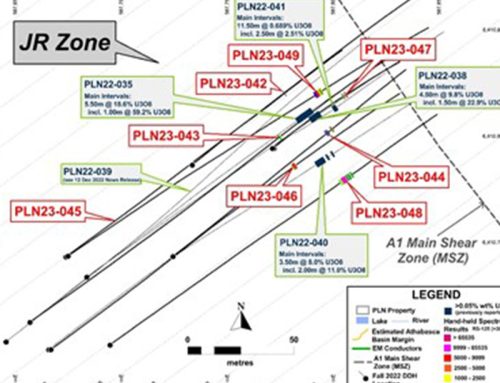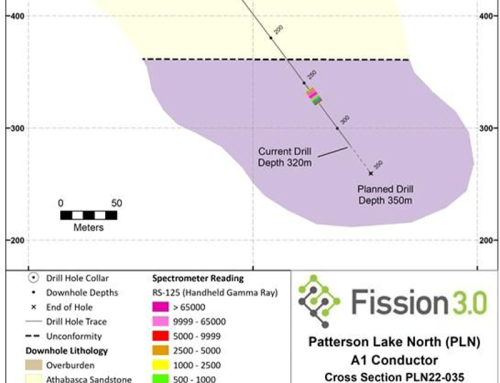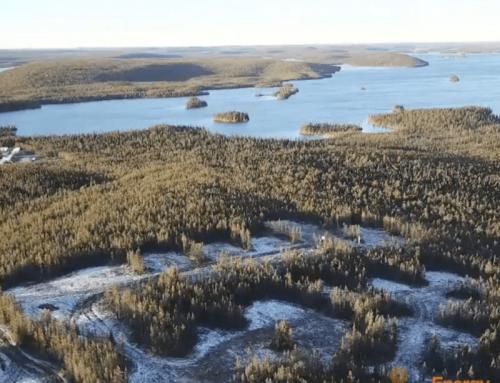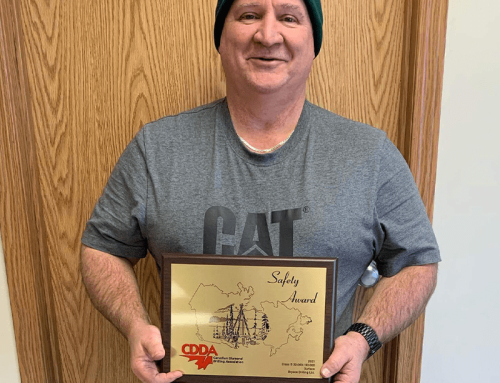CanAlaska Confirms High-Grade Uranium Mineralization in New Uranium Zone at West McArthur
Bryson Drilling client, CanAlaska Confirms High-Grade Uranium Mineralization in New Zone:
Geochemical Assay Results Confirm Basement-Hosted Uranium Mineralization with 2.4% U3O8 over 9.0 metres
High-Grade Interval Includes 3.5% U3O8 over 6.0 metres
Summer Drill Program Continuing on West McArthur Project
Vancouver, Canada, August 22, 2022 – CanAlaska Uranium Ltd. (TSX-V: CVV; OTCQX: CVVUF; Frankfurt: DH7N) (“CanAlaska or the “Company”) is pleased to announce it has received assay results from drill hole WMA067, the first drill hole into a new basement-hosted uranium discovery on the West McArthur project (Figure 1). Geochemical assay results indicate a high-grade intersection of 2.4% U3O8 over 9.0 metres from 906.5 m to 915.5 m, including a higher-grade interval of 3.5% U3O8 over 6.0 metres from 906.5 metres. The Company is continuing its drilling program at the West McArthur project as part of the $5 million 2022 program, focusing its effort on the expansion of this exciting new uranium discovery. The West McArthur project is operated by CanAlaska, which currently holds a 78.00% ownership in the project.

Drill hole WMA067 was designed to test a strong conductor anomaly identified during the 2022 winter geophysical program, 6 kilometres along strike to the southwest of the Company’s 42 Zone mineralization (Figure 2).
WMA067 penetrated 52.8 metres of overburden followed by Athabasca sandstone to 803.8 metres. The lower 80 metres of the sandstone column is strongly bleached with several fault zones containing limonite alteration and de-silicification. Two major metre-scale fault zones in the basal sandstone, the lowermost of which straddles the unconformity, are associated with strong clay, limonite, and strongly de-silicified core resulting in approximately 30% core recovery.
The basement of WMA067 consists of a wide package of graphitic and non-graphitic pelitic metasedimentary rocks,
explaining the 2022 survey conductive response. In the 30-metre interval directly below the unconformity, the metasedimentary package is overprinted by strong clay, chlorite, and hematite alteration associated with multiple fault zones that contain clay gouge, broken core, and cataclastic breccias. The remainder of the basement
 intersection is variably clay- and chlorite-altered, increasing in intensity around intervals of increased fracturing, as damage zones to graphitic fault zones. The intensity of the basement alteration increases with depth, leading up to the basement-hosted uranium mineralization.
intersection is variably clay- and chlorite-altered, increasing in intensity around intervals of increased fracturing, as damage zones to graphitic fault zones. The intensity of the basement alteration increases with depth, leading up to the basement-hosted uranium mineralization.
The uranium mineralization in the drillhole is structurally-controlled and located approximately 100 metres below the unconformity within a broad graphitic shear zone that hosts several re-activated faults. The uranium mineralization, starting at 906.5 metres, is characterized by massive to semi-massive, vein-controlled, and disseminated pitchblende with yellow to orange uranium secondaries that are associated with bleaching, clay, and hematite alteration (Figure 3). Core recovery throughout the basement intersection is 100%. The geochemical assay intervals are summarized in Table 1.


CanAlaska CEO, Cory Belyk, comments, “This new discovery drillhole intersection has now been confirmed by assay results to be wide and high-grade. It is even wider than originally anticipated. The style and grade of mineralization is reminiscent of some of the best basement-hosted uranium drillhole intersections encountered in the Athabasca Basin and at large uranium deposits such as Eagle Point, Millennium and Arrow. Confirmation of width and grade of mineralization in this drillhole is an exciting achievement for CanAlaska, its shareholders, and the joint venture at a time when the world needs more high-grade uranium deposits to be found to support future clean energy demand.”
Geochemical Sampling Procedures
Drill core samples were shipped to the Saskatchewan Research Council Geoanalytical Laboratories (SRC) in Saskatoon, Saskatchewan in secure containment for preparation, processing, and multi-element analysis by ICP-MS and ICP-OES using total (HF:NHO3:HClO4) and partial digestion (HNO3:HCl), boron by fusion, and U3O8 wt% assay by ICP-OES using higher grade standards. Radiometric assay samples are chosen based on downhole probing radiometric equivalent uranium grades and scintillometer (SPP2 or CT007-M) peaks. Assay samples comprise 0.5 metre continuous split-core samples over the mineralized interval. A 0.1% U3O8 cut-off with a maximum internal dilution of 1 metre is used for compositing and reporting the data. The SRC is an ISO/IEC 17025/2005 and Standards Council of Canada certified analytical laboratory. Blanks, standard reference materials, and repeats are inserted into the sample stream at regular intervals by CanAlaska and the SRC in accordance with CanAlaska’s quality assurance / quality control (QA/QC) procedures. Geochemical assay data are subject to verification procedures by qualified persons employed by CanAlaska prior to disclosure.
All reported depths and intervals are drill hole depths and intervals, unless otherwise noted, and do not represent true thicknesses, which have yet to be determined.
Other News
CanAlaska’s latest on-site videos for the West McArthur project can be viewed at www.canalaska.com.
About CanAlaska Uranium
CanAlaska Uranium Ltd. (TSX-V: CVV; OTCQX: CVVUF; Frankfurt: DH7N) holds interests in approximately 300,000 hectares (750,000 acres), in Canada’s Athabasca Basin – the “Saudi Arabia of Uranium.” CanAlaska’s strategic holdings have attracted major international mining companies. CanAlaska is currently working with Cameco and Denison at two of the Company’s properties in the Eastern Athabasca Basin. CanAlaska is a project generator positioned for discovery success in the world’s richest uranium district. The Company also holds properties prospective for nickel, copper, gold and diamonds.
The qualified technical person for this news release is Nathan Bridge, MSc., P.Geo., CanAlaska’s Vice President, Exploration.




